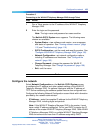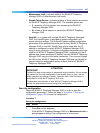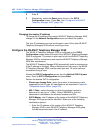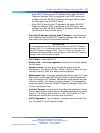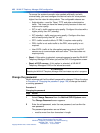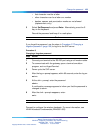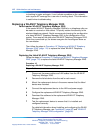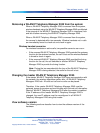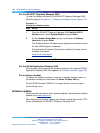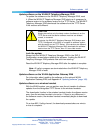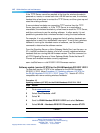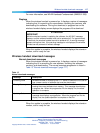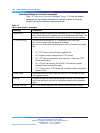
111
Administration and maintenance
This section contains information about the following topics:
•
"Adding a WLAN IP Telephony Manager 2245 to the system" (page 111)
•
"Replacing a WLAN IP Telephony Manager 2245" (page 112)
•
"Removing a WLAN IP Telephony Manager 2245 from the system"
(page 113)
•
"Changing the master WLAN IP Telephony Manager 2245" (page 113)
•
"Viewing software version" (page 113)
•
"Updating software" (page 114)
•
"Wireless handset download messages" (page 117)
Adding a WLAN IP Telephony Manager 2245 to the system
When a WLAN IP Telephony Manager 2245 is added to the system, the
change is seamless and does not affect wireless handset calling ability.
A new WLAN IP Telephony Manager 2245 is detected within two seconds
of being added to the system (booted, configured, and connected). When
detected, any wireless handset not on an active call is immediately forced to
check out and check in again. Any wireless handset in a call immediately
switches to the WLAN IP Telephony Manager 2245 assigned to provide
its timing function. This switchover is not usually noticeable to the user
because it is similar to a normal handoff between APs. When the wireless
handset ends the call, it is forced to check out and check in again.
Checking in to the Gateway
When a wireless handset is checking in with the WLAN IP Telephony
Manager that is providing the Gateway function (not necessarily the same
WLAN IP Telephony Manager 2245 that is providing the timing function), the
wireless handset is assigned its Alias IP address. Subsequently when the
wireless handset checks in with the LTPS, the wireless handset identifies
itself with its new Alias IP address to the Call Server. If the wireless handset
Nortel Communication Server 1000
WLAN IP Telephony Installation and Commissioning
NN43001-504 01.02 Standard
Release 5.0 15 June 2007
Copyright © 2004-2007, Nortel Networks
.



